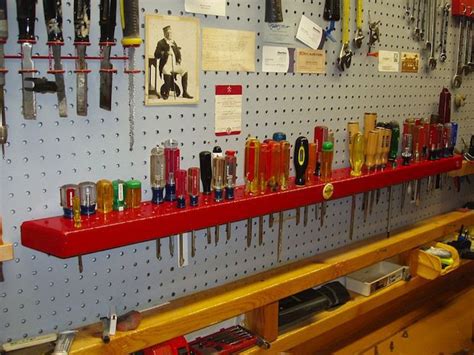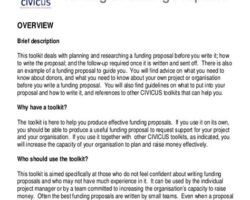Choosing the Right Location
When planning a workshop or event, one of the most important factors to consider is choosing the right location. The location sets the tone for the entire experience and plays a crucial role in the success of your workshop. Choosing a location that aligns with your goals and objectives is essential in creating the right atmosphere and ensuring that participants have a positive experience.
First and foremost, it is important to consider the accessibility of the location. Is the venue easily reachable by public transportation? Are there ample parking spaces available for those driving to the workshop? Ensuring that the location is conveniently located and accessible to all participants can enhance attendance and make it easier for them to travel to and from the workshop.
Another important aspect to consider when choosing a location is the size of the venue. Will the location comfortably accommodate all the participants? It is crucial to ensure that the venue is not too small, as this can lead to discomfort and hinder interaction among participants. On the other hand, a venue that is too large may make the workshop feel empty and disconnected. Consider the number of participants you expect and choose a location that provides an appropriate and comfortable space for the workshop.
- Accessibility
- Size of the venue
- Cost
- Amenities and facilities
- Location’s reputation and ambiance
| Pros | Cons |
|---|---|
| Convenient for participants | Potential higher cost |
| Allows for better interaction | Overly crowded if too small |
| Creates a positive experience | Can feel empty if too large |
Cost is another important consideration when choosing a location. It is essential to determine whether the venue fits within your budget. Keep in mind that the location is just one aspect of the overall event budget, so it is crucial to allocate funds accordingly. Balancing affordability with the desired atmosphere and amenities is key in making the right choice.
Amenities and facilities offered by the location are also worth considering. Are there appropriate audio-visual equipment and internet connectivity? Are there enough restrooms and comfortable seating arrangements? These amenities can significantly impact the overall experience and should be taken into account when making a decision.
Lastly, the reputation and ambiance of the location should be considered. Choose a location that reflects the values and themes of your workshop. The ambiance of the venue should align with your workshop’s objectives and create a positive and supportive environment for participants.
Overall, choosing the right location for your workshop requires careful consideration of various factors. By taking into account accessibility, size, cost, amenities, and ambiance, you can ensure that you select a location that enhances the overall experience and contributes to the success of your workshop.
Setting Clear Goals and Objectives
When it comes to achieving success in any endeavor, setting clear goals and objectives is essential. Whether you are planning a workshop, a business venture, or even personal development, having a clear direction can greatly enhance your chances of success. Setting goals provides you with a roadmap, allowing you to stay focused and motivated throughout the journey. It helps you prioritize your tasks and allocate resources effectively.
One of the first steps in setting clear goals and objectives is to identify what you want to achieve. Ask yourself what the purpose of your workshop is and what specific outcomes you hope to attain. Are you looking to educate participants, develop new skills, or foster a sense of community? By clearly defining your goals, you can tailor your workshop content and activities to align with these objectives.
Next, it is important to break down your goals into smaller, manageable objectives. These objectives should be specific, measurable, attainable, relevant, and time-bound (SMART). By doing so, you create a clear framework that outlines the necessary steps you need to take to reach your goals. Breaking down your goals into smaller objectives also allows for progress tracking and enables you to make adjustments if needed.
Utilizing a list or table in your planning process can be a useful tool. A list can help organize your goals, objectives, and tasks in a structured and visually appealing manner. On the other hand, a table can be beneficial when comparing different options or evaluating your progress against predefined criteria. These visual aids can enhance clarity and facilitate effective decision-making.
Designing a Well-Structured Schedule
Designing a well-structured schedule is crucial for the success of any workshop. A well-planned schedule ensures that all the necessary activities and topics are covered within the allocated time frame. It helps participants to stay organized and focused, allowing them to make the most out of their workshop experience.
One of the key aspects of designing a well-structured schedule is to identify the objectives and goals of the workshop. This will help in determining the key topics and activities that need to be included. Once the objectives are clear, it becomes easier to allocate time for each topic and plan the sequence of activities.
Another important factor to consider when designing the schedule is to provide breaks at regular intervals. Workshop participants need time to absorb and reflect on the information shared. Breaks also offer an opportunity for participants to network and interact with each other. By incorporating breaks into the schedule, the workshop can achieve a balance between information sharing and participant engagement.
Furthermore, it is essential to allocate time for interactive and hands-on activities. Workshops are not meant to be passive learning experiences. Including group discussions, brainstorming sessions, and practical exercises enable participants to actively engage with the content and enhance their understanding of the subject matter. By incorporating these activities into the schedule, participants can learn from each other and apply their knowledge in a practical and meaningful way.
- Identify the objectives and goals of the workshop
- Allocate time for each topic and plan the sequence of activities
- Provide breaks at regular intervals
- Include interactive and hands-on activities
| Time | Activity |
|---|---|
| 9:00 am – 9:30 am | Introduction and icebreaker activity |
| 9:30 am – 10:30 am | Topic 1: Understanding the workshop objectives |
| 10:30 am – 10:45 am | Break |
| 10:45 am – 12:00 pm | Topic 2: Key concepts and theories |
| 12:00 pm – 1:00 pm | Lunch break |
| 1:00 pm – 2:30 pm | Group discussion and case study analysis |
| 2:30 pm – 2:45 pm | Break |
| 2:45 pm – 4:00 pm | Hands-on activity and application of learning |
| 4:00 pm – 4:30 pm | Wrap-up and closing remarks |
Selecting Qualified and Engaging Instructors
One of the key factors in running a successful workshop is having knowledgeable and engaging instructors. The quality of the instructors can greatly impact the overall experience and satisfaction of the participants. Therefore, it is crucial to have a thorough selection process to ensure that only the best instructors are chosen to lead the workshop.
When selecting instructors, it is important to look for individuals who have relevant expertise and experience in the workshop topic. They should have a strong educational background and hands-on experience in the field. This will ensure that they possess the necessary knowledge and skills to effectively teach the participants.
In addition to qualifications, it is essential to consider the instructor’s ability to engage and connect with the participants. A great instructor is not only knowledgeable but also possesses excellent communication and interpersonal skills. They should be able to captivate the audience’s attention, facilitate discussions, answer questions, and create an inclusive learning environment.
To ensure the instructors’ suitability, it is beneficial to conduct interviews or auditions. During these sessions, assess their teaching style, communication skills, and ability to handle different types of participants. Ask for references and contact their previous students or workshop attendees to gather feedback on their teaching abilities and overall satisfaction.
Moreover, creating a diverse team of instructors can enhance the overall learning experience. Different instructors bring unique perspectives, experiences, and teaching methods, making the workshop more comprehensive and well-rounded. Consider choosing instructors from various backgrounds and expertise to provide a diverse range of insights to the participants.
In conclusion, selecting qualified and engaging instructors is crucial for the success of a workshop. Their expertise, experience, and ability to connect with participants play a significant role in creating a valuable and enriching learning experience. By using a thorough selection process and considering factors such as qualifications, teaching ability, and diversity, workshop organizers can ensure that they have the best team of instructors to deliver an exceptional workshop.
Marketing and Promoting Your Workshop
Marketing and promoting your workshop is essential to ensure its success and attract participants. With effective marketing strategies, you can reach a wider audience and generate interest in your workshop. Here are some key tips for marketing and promoting your workshop:
1. Define your target audience: Before you start promoting your workshop, it is crucial to identify your target audience. Consider who would benefit the most from attending your workshop and tailor your marketing efforts towards reaching that specific demographic.
2. Utilize social media: Social media platforms such as Facebook, Instagram, and LinkedIn are powerful tools for marketing your workshop. Create engaging posts, share relevant content, and leverage targeted advertising to reach potential participants.
3. Create compelling content: Develop captivating content that highlights the value and benefits of attending your workshop. This could include testimonials from past participants, success stories, or sneak peeks into the topics covered during the workshop. Use visuals, such as high-quality images or videos, to make your content more appealing.
4. Collaborate with influencers: Partnering with influencers or industry experts can significantly boost your workshop’s visibility. Reach out to influential figures in your field and offer them the opportunity to attend or collaborate with your workshop. Their endorsement can help attract a larger audience.
5. Offer early bird discounts or incentives: Create a sense of urgency and encourage early registrations by offering special discounts or incentives for those who sign up early. Limited-time offers can create a sense of exclusivity and motivate potential participants to take action.
6. Leverage email marketing: Build an email list of interested individuals and regularly keep them informed about your workshop. Send out newsletters, updates, and reminders to keep potential participants engaged and encourage them to register.
7. Attend relevant events and conferences: Make connections and promote your workshop by attending industry events and conferences. Network with like-minded professionals, distribute promotional materials, and engage in conversations that showcase the value of your workshop.
| Benefits of Marketing and Promoting Your Workshop | How it Helps |
|---|---|
| Increased visibility | Attract a larger audience and gain recognition in your industry. |
| Higher participation rate | Effective marketing efforts can boost attendee numbers. |
| Enhanced credibility | Strong marketing tactics can build trust and establish your workshop as a reputable event in the field. |
| Opportunities for collaboration | Effective promotion can attract influential individuals, fostering partnership opportunities. |
| Increased revenue | A successful marketing campaign can lead to more registrations and higher workshop profitability. |
In conclusion, marketing and promoting your workshop is crucial to its success. By defining your target audience, utilizing social media, creating compelling content, collaborating with influencers, offering incentives, leveraging email marketing, and attending relevant events, you can effectively market your workshop and achieve a higher participation rate. The benefits of effective marketing include increased visibility, enhanced credibility, collaboration opportunities, and ultimately, higher revenue. So, invest time and effort in implementing a robust marketing strategy to ensure that your workshop receives the attention it deserves.
Providing Adequate Facilities and Equipment
When it comes to organizing a workshop, it is crucial to provide participants with adequate facilities and equipment. This is because the quality of the facility and equipment used can greatly impact the learning experience and overall satisfaction of the attendees. To ensure that your workshop is effective and successful, here are some key factors to consider:
1. Comfortable and well-equipped facility: Choose a venue that is spacious, well-lit, and properly ventilated. The facility should have comfortable seating arrangements and ample space to conduct activities and group discussions. Additionally, make sure that the facility is equipped with necessary amenities such as restrooms, Wi-Fi connectivity, and audio-visual capabilities.
2. High-quality equipment: Depending on the nature of your workshop, you may require various types of equipment such as projectors, microphones, laptops, or specialized tools. It is important to invest in high-quality equipment that is reliable and user-friendly. Conduct a thorough assessment of your equipment needs and ensure that everything is in good working condition before the workshop begins.
3. Safety measures: Safety should be a top priority when providing facilities and equipment for your workshop. Ensure that the venue is compliant with fire safety regulations and conduct regular inspections to identify any potential hazards. Provide clear instructions on the safe use of equipment and ensure that participants are aware of emergency procedures.
By providing adequate facilities and equipment, you can create a positive learning environment and enhance the overall workshop experience for your participants. Remember to always assess your specific needs and make necessary arrangements to ensure a smooth and successful workshop.
Creating a Positive and Supportive Environment
When planning a workshop, it is essential to create a positive and supportive environment for participants. This will not only enhance their learning experience but also encourage them to actively engage and collaborate with others in the workshop.
One way to create a positive and supportive environment is to foster a sense of inclusivity and respect. Make sure everyone feels welcome and valued regardless of their background or experience. Encourage participants to share their thoughts and ideas, and create a safe space where they can express themselves without fear of judgment or ridicule.
Another aspect of creating a positive and supportive environment is to promote teamwork and collaboration. Encourage participants to work together on group activities and projects. This not only strengthens their problem-solving and communication skills but also fosters a sense of camaraderie and support among participants.
- Inclusivity: Ensure that everyone feels welcome and valued regardless of their background or experience.
- Respect: Create a safe space where participants can express themselves without fear of judgment or ridicule.
- Teamwork: Promote collaboration and encourage participants to work together on group activities and projects.
- Camaraderie: Foster a sense of support and camaraderie among participants.
| Benefits of a Positive and Supportive Environment |
|---|
| 1. Increased participant engagement and participation. |
| 2. Enhanced learning experience and knowledge retention. |
| 3. Improved problem-solving and communication skills. |
| 4. Increased motivation and enthusiasm among participants. |
| 5. Greater collaboration and networking opportunities. |
Frequently Asked Questions
Question 1: How do I choose the right location for my workshop?
When choosing the right location for your workshop, consider factors such as accessibility, amenities, cost, and the target audience’s preferences. Think about whether it should be held in a central location, near public transportation, or easily reachable by participants.
Question 2: What are the key components of setting clear goals and objectives for a workshop?
To set clear goals and objectives for your workshop, start by identifying the specific outcomes you want to achieve. These could include knowledge gained, skills developed, or behavior changes. Make your goals specific, measurable, achievable, relevant, and time-bound (SMART) to ensure clarity and effectiveness.
Question 3: How can I design a well-structured schedule for my workshop?
To design a well-structured schedule for your workshop, start by outlining the main topics or activities you want to cover. Determine the time allocated to each item, allowing for breaks and participant engagement. Ensure a logical flow, and consider incorporating interactive elements to keep participants engaged and motivated.
Question 4: What should I consider when selecting instructors for my workshop?
When selecting instructors for your workshop, consider their qualifications, expertise, and experience in the topic area. Look for individuals who have a track record of delivering engaging and informative presentations. Additionally, ensure the instructors have effective communication skills and are able to connect with and support participants throughout the workshop.
Question 5: How can I effectively market and promote my workshop?
To effectively market and promote your workshop, utilize various online and offline channels. Create a compelling website or landing page with all the necessary details and benefits of attending. Leverage social media platforms, email marketing, and targeted online advertisements. Additionally, consider partnerships with relevant organizations or influencers and offer early bird discounts or referral incentives.
Question 6: What should I consider when providing facilities and equipment for my workshop?
When providing facilities and equipment for your workshop, consider the needs of your participants and the nature of the workshop. Ensure the venue has appropriate seating, lighting, and temperature control. Provide essential equipment such as projectors, screens, microphones, and whiteboards. Test all equipment prior to the workshop to avoid technical glitches.
Question 7: How can I create a positive and supportive environment during my workshop?
To create a positive and supportive environment during your workshop, focus on building rapport with participants. Encourage open communication, active participation, and mutual respect. Provide opportunities for networking and collaboration among participants. Be approachable, attentive, and responsive to their needs and feedback throughout the workshop.





